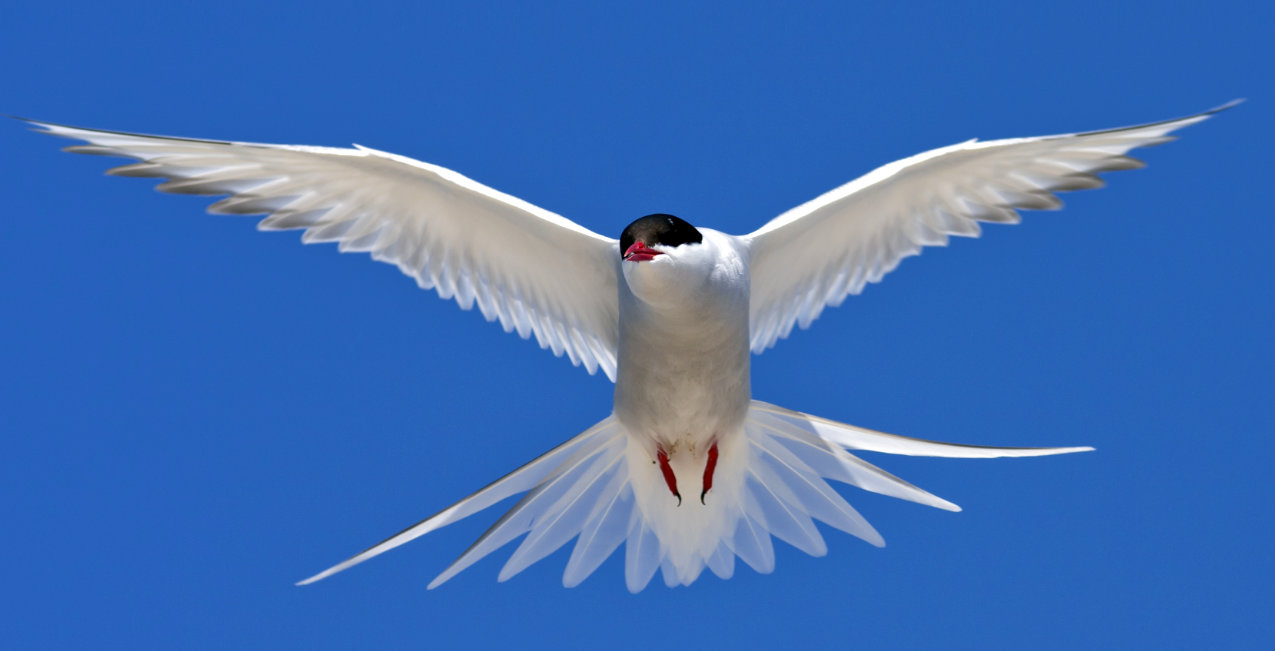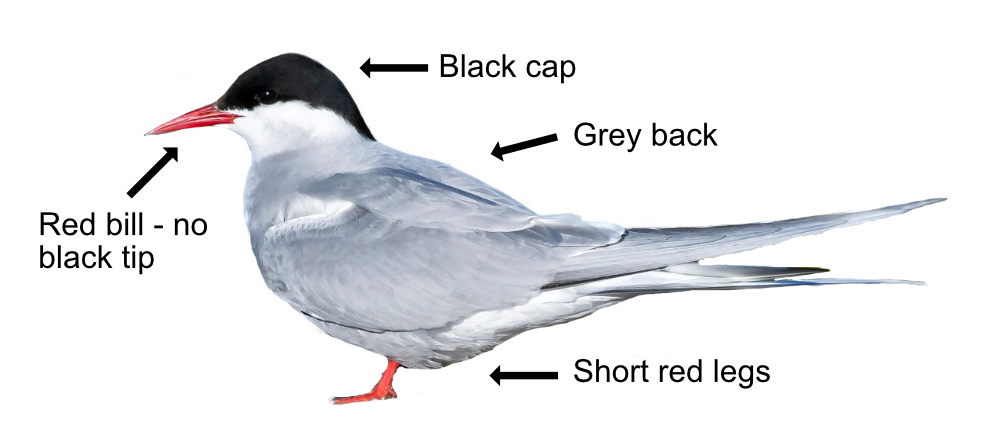
The Arctic Tern is a big daylight lover and travels huge distances to be in the sun. They breed in the Arctic during the nearly constant summer daylight and, in the autumn, fly all the way to the Antarctic to enjoy the winter sun. A return trip that can be over 70,000km. Over its whole life, an Arctic Tern can fly the same distance as three round trips to the Moon!
The Arctic Tern is easily confused with the Common Tern. It has a grey back, white rump, black cap, white cheeks, short red legs, and a red bill without a black tip. Compared to the Common Tern, their flight is more buoyant on long tapering wings with pale wing tips and the wings look translucent. They have a longer forked tail, though without them side by side, it is tricky to tell. The Arctic Tern makes several calls: A buzzing, "ee-yar" alarm call, a "chek chek" call and an angry, fast, clicking "ek ek ek" rattle like a Geiger counter.

Arctic Terns catch fish by plunge diving. They often look hesitant as they hover before diving and tend to feed in groups close together. Their favourite food includes sand eels, sprats, herrings and other small fish. They will also eat insects, crabs and worms.
Arctic Tern courtship begins with a high flight, where the female will chase the male to a high altitude and then slowly descend. This display is then followed by fish flights, where the male will offer fish to the female. Once paired, the happy couple choose a nest site, usually on the beach of a small island close to the sea, often in a colony with Common Terns. The nest is a shallow scrape in the ground. The eggs are laid in May and mum and dad incubate the 1-3 mottled eggs for 20 days until they hatch. The chicks quickly move to hide in nearby vegetation. The proud parents will drive away any predators by swooping and angrily pecking - including people! The youngsters can fly after 21 days but depend on mum and dad for several more weeks. Adults will do their winter moult before starting the epic migration down to Antarctica. The youngsters will stay there for 2 years before they return to breed.
The Arctic Tern is a summer visitor with about 50,000 coming to northeastern Britain. A small number breed in Scotland, but most breed further north. Outside the breeding season, the Arctic Tern is a sea bird and seldom comes inland. They migrate further than any other bird, going down the European and West African coasts to reach Antarctica in October and returning the same way in the spring. They depend on a healthy marine environment and can be affected by fish shortages. Arctic Terns are long-lived, often reaching ages of 25 years or more.
Their Latin name is 'sterna paradisaea' and is derived from the Old English 'stearn' for 'tern' and the Latin 'paradisus' for 'paradise'. Why the Arctic and Antarctic are paradises is a mystery. A local Scottish name 'pictarnie' comes from their distinctive call. As you would guess, the English name is from where it mainly breeds.